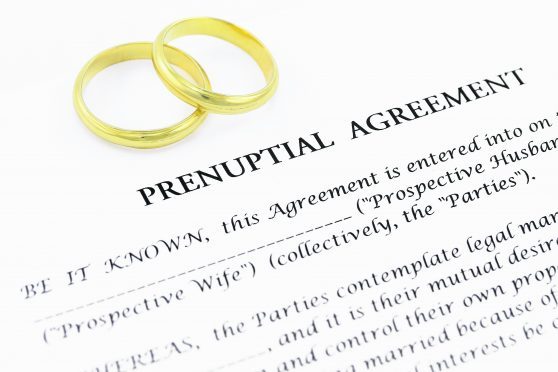Shaun George looks at the financial and legal aspects of cohabitation and, while not terribly romantic, the benefits of prenuptial agreements
Over the past two weeks my colleague Mark Stewart has been looking at steps which can be taken to make sure that your estate is passed on to the individuals of your choice, and the plans that can be put in place to limit your exposure to inheritance tax.
This week we consider the steps that individuals should consider before moving in with a partner or getting married. While such a step is grounds for celebration, it is also important to consider the practicalities and financial consequences. And, without wishing to put a damper on proceedings, careful thought should also be given to the protections that can be put in place in the event that the relationship breaks down.
There are a number of factors to take into account before embarking on a cohabiting relationship. Before handing over the spare keys to your property it is important to be aware of the legal consequences of cohabitation.
The Family Law (Scotland) Act 2006 introduced rights for cohabitants in Scotland (but not in England and Wales) for the first time.
The motivation for the legislation was laudable, however it has created risk where there is an imbalance in the assets or earning capacity of the couple, and it remains uncertain as to how such claims should be quantified if the relationship breaks down. It is surprising to many that the law provides for no minimum period of cohabitation in Scotland before a claim can be made, although it is fair to say that the courts to date have been more receptive to claims where the cohabitation has been for a lengthy period. It is also important to bear in mind that the law insists that such claims are pursued through the courts within one year of the end of the relationship.
Although the law does not provide cohabitants with the same rights as married couples or civil partners, in certain circumstances a financial claim can be pursued against a former partner. If someone can show that they have suffered economic disadvantage in the interests of their former cohabitant or their children, or that their former cohabitant has derived economic advantage from contributions they made (whether financial or not) they may be entitled to claim a lump sum.
Couples may avoid the statutory legal framework by entering into a Cohabitation Agreement. Such an agreement can regulate day-to-day financial matters and set out the arrangements that will apply should the couple separate in the future. For example, agreements that reflect the unequal contributions that the couple have made to the purchase price of a property are regularly entered into in Scotland.
Providing both parties understand the implications of the agreement, and are not being forced to enter into them, then it is unlikely that its terms would later be reduced or set aside by a court. It is advisable in these situations that both parties obtain independent legal advice before entering into such an agreement.
It is also important to have a will in place in the event that either party dies. This would prevent the surviving cohabitant having to raise a court action within six months of the date of death to benefit from the deceased’s estate.
Couples should also consider putting in place a prenuptial agreement prior to their marriage. The purpose of such an agreement is to protect assets in the event of the marriage or civil partnership coming to an end. In Scotland, properly prepared agreements are likely to be held as enforceable and legally binding on the individuals. Such agreements usually make provision to ‘ring fence’ certain assets so that they would be excluded from the pot of matrimonial property at the time of divorce. While some may consider cohabitation and prenuptial agreements not to be terribly romantic, my experience as a family lawyer is that putting these arrangements in place can, in fact, strengthen a relationship by making both parties feel more secure. Prenuptial agreements are likely to avoid future disagreements on separation and the associated expense of litigation, and can be drawn up fairly quickly and cost effectively. Ideally they should be discussed, planned and signed well in advance of the marriage date. They can be particularly helpful if there are children from a previous relationship or inherited wealth which requires to be protected. I have rarely come across a client who has regretted entering into a pre-nuptial agreement, but I have seen many who regret that they didn’t!
Shaun George is a partner and head of the family law team at Brodies LLP. For more information contact Shaun on 01224 392531 or at shaun.george@brodies.com; www.bfamily.brodies.com
